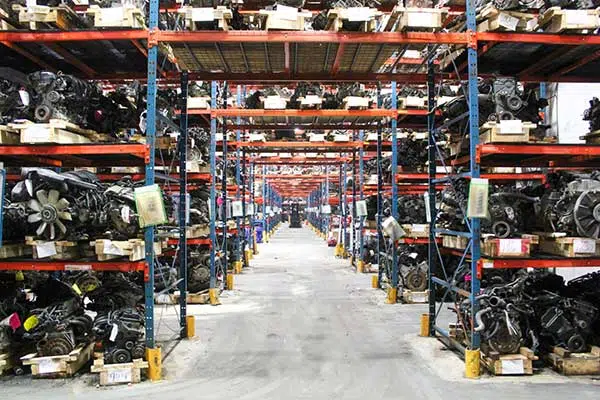In today’s complex automotive landscape, navigating the vast world of auto parts supply requires both precision and knowledge. The difference between a vehicle that performs optimally and one that falters often lies in the quality of components used in its maintenance and repair. As vehicles become increasingly sophisticated, understanding the ecosystem of parts procurement becomes not just beneficial, but essential.
The Evolution of Automotive Components
The automotive parts industry has transformed dramatically over the past decades. What once required specialised knowledge and dealer-exclusive access has democratised into a realm where discerning vehicle owners can make informed choices.
The modern landscape offers several distinct advantages:
· Direct access to OEM (Original Equipment Manufacturer) components
· Aftermarket alternatives with varying price-performance ratios
· Remanufactured options that balance sustainability with reliability
· Performance upgrades that transcend factory specifications
“The integrity of a vehicle is only as sound as its most compromised component,” notes a prominent Singapore auto parts supply expert. This fundamental truth underscores why component selection deserves meticulous attention.
Deciphering Quality in a Saturated Market
Quality Assessment becomes paramount when faced with the paradox of choice. The distinguishing characteristics between premium and substandard components often manifest subtly—in the molecular composition of brake pads, the precision engineering of fuel injectors, or the resilience of suspension components.
When evaluating parts, consider these critical factors:
· Material composition and manufacturing standards
· Compatibility with specific vehicle makes and models
· Warranty provisions and support infrastructure
· Compliance with regional regulatory requirements
The discerning consumer must approach auto parts procurement with both scepticism and curiosity—questioning not just price differentials but understanding the engineering principles that justify them.
The Digital Revolution in Parts Procurement
Online Cataloguing Systems have revolutionised access to automotive components. The contemporary parts ecosystem operates with algorithmic precision, where vehicle identification numbers translate instantly into compatibility-matched component lists.
This technological integration offers unprecedented advantages:
· Real-time inventory visibility across multiple suppliers
· Comparative analysis of compatible alternatives
· Transparent pricing structures that eliminate traditional markups
· Access to specialist components previously available only through dealership networks
“The democratisation of auto parts information has transformed the power dynamic between suppliers and consumers,” observes a Singapore auto parts supply specialist with decades of industry experience.

Maintenance Economics: The Long-Term Perspective
Cost-Benefit Analysis in parts selection extends beyond immediate price considerations. The truly economical approach considers the component’s lifespan, its effect on connected systems, and its impact on overall vehicle performance.
The comprehensive evaluation includes:
· Initial acquisition cost versus projected lifespan
· Installation complexity and associated labour expenses
· Effect on fuel efficiency and operational performance
· Potential impact on resale value and manufacturer warranties
The financially prudent approach often reveals that seemingly expensive components prove economical when their extended service life and reduced peripheral damage are factored into the calculation.
Environmental Considerations in Parts Selection
Sustainability Metrics increasingly influence the automotive components industry. Remanufactured parts, once viewed with scepticism, now represent a sophisticated segment of the market—offering environmental benefits without compromising performance.
The ecological impact manifests in multiple dimensions:
· Reduced raw material consumption and manufacturing energy requirements
· Decreased waste volume in automotive disposal streams
· Lower carbon footprint throughout the supply chain
· Potential for improved efficiency through updated designs
“The future of automotive sustainability depends not just on vehicle propulsion technology, but on the circular economy of components,” emphasizes a forward-thinking Singapore auto parts supply analyst.
The Technical Artistry Behind Component Design
Engineering Precision in automotive parts represents an understudied intersection of scientific principles and practical application. Each component, regardless of size or perceived significance, undergoes rigorous design iterations that balance durability, performance, and economic viability.
Consider the humble spark plug—a seemingly simple device that encapsulates extraordinary engineering challenges:
· Ceramic insulators that must withstand extreme thermal cycling
· Electrode materials that balance conductivity with wear resistance
· Thread designs that ensure gas-tight seals under fluctuating pressures
· Precise gap specifications that optimize combustion efficiency
“The elegance of automotive engineering often lies in components that receive the least attention from the untrained eye,” reflects a veteran Singapore auto parts supply engineer.
The Global Supply Chain Choreography
Logistics Networks supporting the automotive parts industry represent a masterclass in global supply chain management. Components may traverse multiple continents before reaching their final installation point, requiring intricate coordination of manufacturing, quality control, transportation, and inventory management.
This global ballet of parts movement has evolved sophisticated mechanisms:
· Just-in-time delivery systems that minimize inventory costs
· Predictive analytics that anticipate replacement demand patterns
· Strategic distribution hubs that optimize accessibility
· Blockchain verification systems that combat counterfeit components
The Cultural Anthropology of Automotive Maintenance
Regional Preferences in vehicle maintenance reveal fascinating cultural insights. Different automotive traditions have evolved distinct approaches to parts selection and maintenance philosophies, influenced by economic factors, climate conditions, and historical relationships with vehicle manufacturers.
In certain regions, preventative replacement schedules dominate, while others favor a more responsive approach. Some markets prioritize original components regardless of cost, while others have developed sophisticated expertise in compatible alternatives. This diversity of practice enriches the global knowledge base and drives innovation throughout the automotive ecosystem, ultimately benefiting all participants in the realm of auto parts supply.

